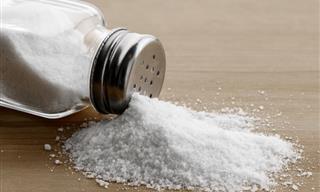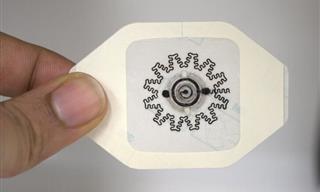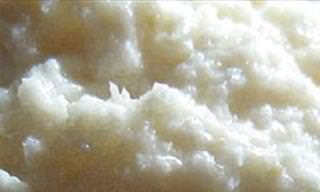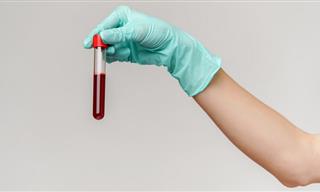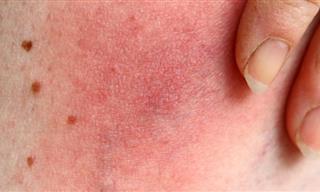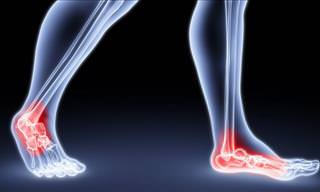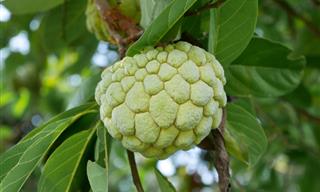A sprained ankle can be a very aggravating thing since most of the time it happens when we least expect it, and almost always becomes a hindrance to our life. This annoying injury can put us down for a long time, and, despite the ever-increasing risk of doing it again, there are effective home remedies that can help you heal faster from a sprained ankle, or just ward off the beginning of tear on your ankle straps. If you get ankle pain often or sprain it, you may want to hold on to this important information and find out about some effective treatments you can do at home.
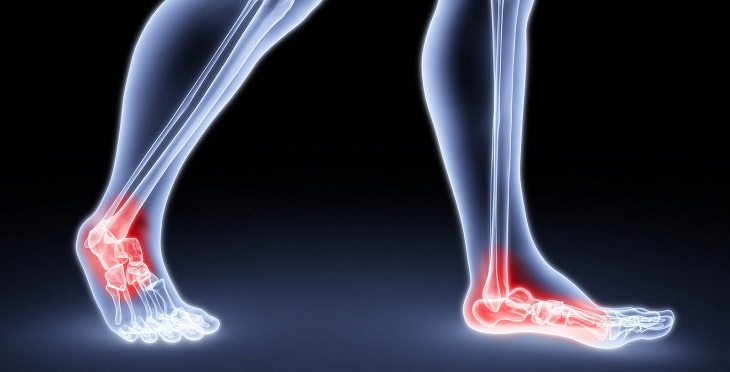
Initial, basic treatments:
As you well know, ice can help heal a sprained ankle because cold can fight off inflammation and also reduces pain – using ice helps decrease that pain gradually. All you need to do is take a glass of ice cubes, wrap them in a moist cloth towel and put it on the sprained ankle for 10-20 minutes a day for a week. Note that if you see the color of the skin changing to bright white – remove the ice immediately, because you may cause a cold burn. Do not put the ice directly on the skin, as it may damage it, and if you suffer from diabetes, you should consult your doctor before trying this.
Bandaging
One of the important things to do after spraining your ankle is to avoid and remove the shoe to examine the injury closely. You want to keep that ankle as rigid as possible, and so try not to remove your shoe until after you've gotten home and can bandage it right away. Bandaging the ankle avoids further damage and also helps mitigate the pain (by not allowing the injured area to move) and the swelling of the injured area.
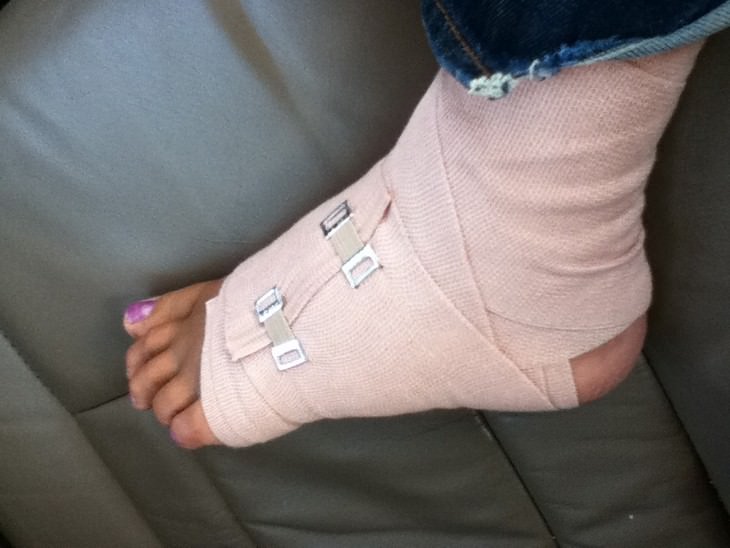
The sprain should be wrapped with a strong elastic bandage, but not so tightly that it stops the flow of blood. It's best to leave the bandage on the area all hours of the day, and take it off at night to sleep and so the injured area can "breathe". It's important you check on your condition now and again because if the bandage makes you numb, you must remove it immediately. Once you've sprained your ankle, it's a good idea to bandage it before embarking on an activity where it might get damaged again.
Rest and lifting the foot
One of the first things you need to know if you've sprained your ankle is to rest; for the first 48 hours, it's best not to put pressure on the injured area and it's best not to do any physical activity at all. The swelling and pain usually go down significantly after this period of time, and then you can start to, very gradually, put weight on the injured ankle, but it has to feel comfortable doing it. If you feel your ankle can't handle the weight, you have to stop, lie down and keep your leg raised. Put your leg on a big pillow, this will also reduce pain and swelling.

8 Natural treatments for a sprained ankle
1. Onions
The onion, being a natural anti-inflammatory agent, can really help your ankle and reduce that strong pain. All you need to do is take one big onion and put it in the fridge for 2 hours. Then, cut it into small pieces and mix it with a tablespoon of salt in a small bowl. Put the mixture on the injured area, bandage it and leave it like so for 8 hours. After that period of time, you should replace it all – mix and bandage. You can do so as much as needed until relief is achieved.
2. Garlic
Garlic can be a very quick home remedy for ankle sprains, it will calm the pain, improve recovery times and strengthen your immune system – all at once. All you need to do is clean the injured area, dry it well, then take one tablespoon of garlic juice and mix it with one tablespoon of coconut or almond oil. The mix should be gently massaged into the injured area for about 10 minutes and then cleaned well. This should be repeated twice a day for 2-3 weeks for best results.

3. Olive oil
Olive oil contains phenomenal materials that can alleviate the inflammation and hasten the healing process of a sprained ankle. All you need to do is take a teaspoon of olive oil, heat it up and then allow it to cool a bit until it is only warm. When the oil is lukewarm, massage it into the injured area for several minutes. This can be done 3 times a day until you get relief from pain and your muscles relax.
Alternatively, you can mix one tablespoon of olive oil with one egg yolk and smear the mix on the injured area, wrap with a clean cloth and keep the bandage for two days. Afterward, remove the cloth bandage, clean the area well and repeat the process if needed.
4. Turmeric
Turmeric does a lot more than give our food a unique taste. It can also subdue our pains and alleviate the inflammation caused by the sprain. In addition, it can also prevent blood clots, improve the blood flow and deal with skin and digestion issues. All you need to do is to mix turmeric powder with warm water to get a balm-like texture. Add a bit of lemon juice and hit the mixture; then, smear it on the injured area, wrap in a bandage and take it off 10 hours or a night later. For best results, repeat this action continuously for 3 days. If you'd like more help with the pain, you can add a teaspoon of turmeric powder to a warm glass of milk, mix well and drink it – you can do so twice a day for a week.

5. Castor oil
Castor oil contains an extraordinary amino acid that was found to have anti-inflammatory properties. It is called oxalic acid. This acid and the castor oil, in general, have been used by traditional medicine men to help people dealing with ankle problems. All you need to do is pour some castor oil into a bowl and dip a cotton piece of cloth in it; then, you need to put the cloth on the hurt area of the ankle and bandage it. Now heat some water, pour it into a hot rubber water bottle and put it against the painful area. Keep it there for 30 minutes, with your leg lifted up. Afterward, remove the bandage and the hot water bottle and massage the area gently. Repeat this process 3 times a day for 2-3 days.
6. Magnesium Sulfate (English Salt)
Magnesium Sulfate, or English Salt, is a mineral compound found in many pharmacies. Used externally, it can be used to treat rashes of the skin, inflammations, local pollutants or small ulcers, and is considered an excellent home remedy for sprained ankles. All you need to do is fill a cup with English salt and pour it into a tub filled with lukewarm water. Then mix the water well to completely melt the salt crystals and soak your ankle for 30 minutes. Repeat this twice a day for 3 days to get the best results.
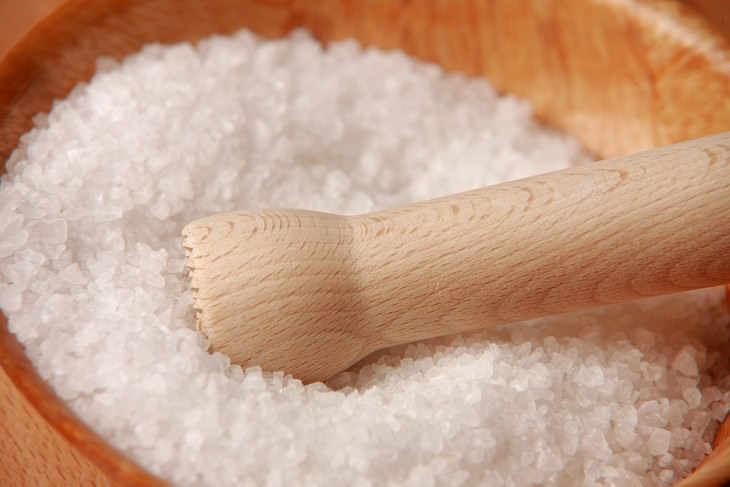
7. Cabbage
Yes, the familiar cabbage is also a good remedy for a sprained ankle. It is an anti-inflammatory and it can reduce pain. It is rich in vitamins and phytonutrients – compounds that serve as antioxidants and help the injury heal faster. All you need to do is remove the outer leaves of the cabbage and squeeze all the juice out of them. The squeezed leaves should be heated a bit in the oven, covered in tin foil, then put on the injured area and wrapped with a bandage. To keep the area well warmed, you should cover the legs with a blanket or a towel and sit with the bandage for 30 minutes, twice a day, for at least 2 days.

8. Ginger Roots
Ginger roots are very efficient at reducing the symptoms of a sprained ankle – including swelling, pain, etc. All you need to do to gain this benefit is to fill a pot with 8 cups of water and add a cut ginger root about 2-3 inch (5-8 cm) long. Boil the water in the pot for 5 minutes, turn off the flame, and then leave the liquid in the pot until it reaches room temperature.
Now, soak a clean cotton cloth in the ginger water and wrap the injured ankle with it. It's important to start this treatment within 2-3 days of the moment of injury. Also, do not use the liquid when it is too hot, since it may irritate the skin and cause tissue damage.
 Go to BabaMail
Go to BabaMail













